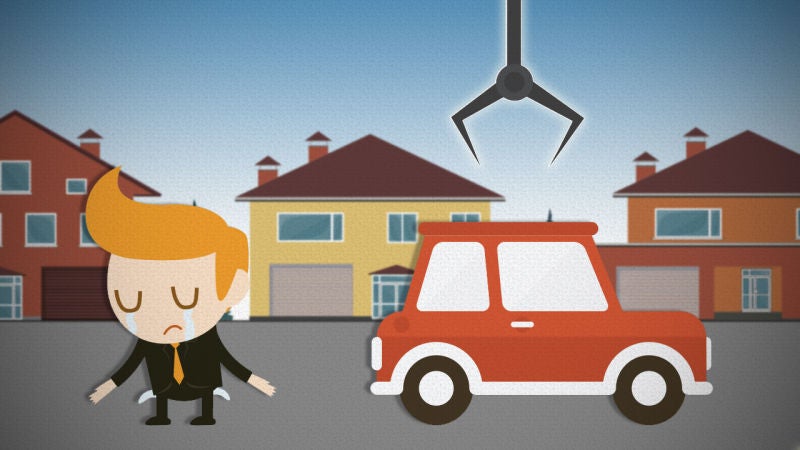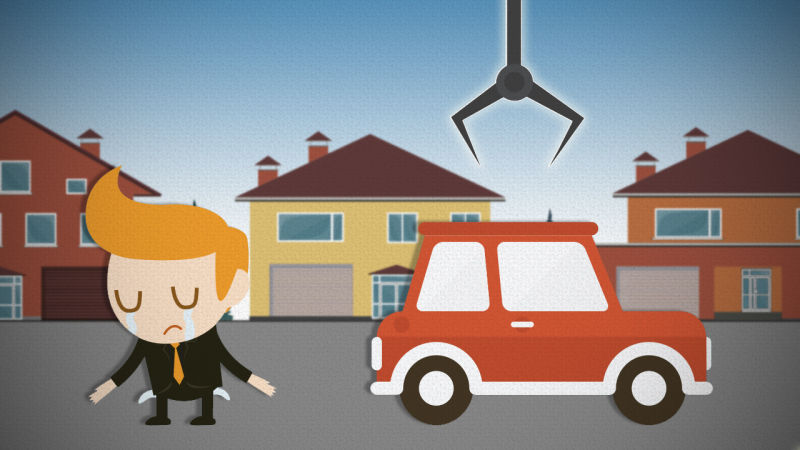
The average auto loan payment is almost $500 a month and loan delinquency is at an all time high. Many industry analysts are concerned about the long-term financial consequences of car loans people can’t afford. But if you’re struggling to make your payments, don’t blame the bank or the dealer.
According to a report by Experian, Americans are leasing more, borrowing more, and taking out longer loans for cars. Now, all of these indicators aren’t necessarily bad if consumers are handling their finances. However, given that loan delinquencies are on the rise, it is apparent that too many buyers are taking on payments that are not appropriate for their budget.
The key here is buying a car that will suit your financial situation. I’ve ranted before against the very narrow philosophy that leases are always a bad idea and you should never get a new car. Every buyer has a different set of circumstances, so it is up to them as to what financing option is most beneficial.
Advertisement
Barring some major catastrophe that decimates your available income, if you are struggling to make your car payment every month, it is probably because you didn’t do the math ahead of time. I understand that getting a brand new car with all kinds of cool features is a great feeling, but that new car euphoria wears out and you are stuck with those payments for a long time. It doesn’t feel good to be driving something that is hurting you financially.
What You Want May Not Be What You Can Afford
I’m no financial advisor, but I can tell you that before you make a major purchase like an automobile really take some time to have an understanding of what your budget is. Don’t make the common mistake and roll into a dealer and get a car you think you can afford.
Sponsored
This doesn’t require complex math skills, but it does require a calculator and you being honest with yourself. Look carefully at your paycheck and pay attention to that after-taxes number, because when it comes to your usable income that is the only number that really matters.
Subtract your major expenses like rent or mortgage and utilities. Are you on the hook for student loans or other debts? Make sure you reduce your total by those amounts as well. What is your credit card bill? Ignore that minimum payment garbage; you want to deduct the whole monthly balance. Repeat this process for all other expenses and you will have a remainder.
Wait… you aren’t done yet.
Don’t blow every dime you have left on a car payment. You need to be saving something, the last thing you want is a fancy car but no emergency fund in case something comes up. People get sick, injured, laid off, disasters happen. You want money put aside so you can get by until things get better.
Advertisement
Once all calculations are done, you should have a specific number on what you can afford each month. Now work backwards; fire up one of those auto loan calculators and start plugging in numbers. Be conservative and don’t go fooling yourself with crazy long loans. I recommend 60 months maximum for most people, though there are some instances where a longer loan might be beneficial.
Let’s say you come up with a figure of $400 a month. The average new car loan is about 4 percent for 60 months; people with good credit will do better and folks with poor credit will pay more. If you wanted to finance no more than $400 at 4 percent APR for 60 months, your total spending budget is around $21,500. Do you have a trade or some cash to put down? If so, you can increase your budget by that amount.
Now hold on there, we still aren’t quite ready to go shopping.
Don’t forget, you need to cover your sales tax and DMV fees on top of whatever the vehicle will cost. With that goal of $400 monthly and an available down payment of $2500, your total budget including taxes and fees is now $24,000. Time to bring out the calculator again! Subtract about $400-$500 for dealer and DMV fees. Sometimes it will be more, sometimes less—it all depends on your state.
We are left with $23,500. If your state sales tax is 5 percent, your actual spending budget can be no more than $22,380.
But I Have Bad Credit!
Whenever you are shopping for a major purchase that requires a loan, you should check your credit score. Our friends at Lifehacker have all kinds of resources on how to do so for free. Do not under any circumstances walk into a dealership clueless about your credit situation.
If for whatever reason your score is low, understand that your loan is going to be much higher. Banks see you as a greater risk and will charge you more. You need to plan for this when it comes to your budget.
The average APR for buyers in the subprime category (FICO 501-600) is about 10 percent. You may do better on the rate but again use conservative numbers. That means if you wanted to purchase a $15,000 car and financed it for 60 months, your payments would be around $380 a month and you will have paid over $4,000 in interest over the life of the loan. Ouch!
Bringing a larger down payment will ease the pain of the high interest rate, but the lenders want to see at least 20 percent down. Scrounging up $3000 in cash on a $15,000 car might be tough, but without it, you are going to risk being underwater.
I’m Upside Down On My Loan
One of the worst scenarios is to have negative equity that you are now rolling into another loan. If you are not bringing some trade value and/or cash to the table to reduce the balance, this could be a recipe for financial disaster.
If what you are driving is worth significantly less than what you owe, seriously consider riding it out until the car is either paid off or the balance of the loan reaches and equilibrium with the trade-in value. Even if you have to put some money out for repair costs, the long-term savings of keeping your current ride will be in your favor.
If you decide to move forward and roll that loan into another car, do it with the least amount of risk possible. First, estimate what your additional balance is going to be and how it will impact your payments. If you are $5,000 under water, use the same calculations as you would an auto loan.
At a 10 percent APR over 60 months you are looking at an additional $106 a month on top of whatever payment you end up with on the next car.
Your best bet is to get something used that has already taken a depreciation hit. That way your negative equity won’t be compounded by a steep drop in value. If you absolutely must get a new car, consider leasing. Your payments will be higher, but you will be able to start fresh at the conclusion of the lease.
Perhaps my friend Tavarish was right and some of you shouldn’t be financing a car. I know, you don’t want to buy some cheap beater off Craigslist and you don’t have the cash available to get a quality used car. Remember, what you want and what you need is not necessarily the same thing.
If you are determined to replace your ride, get your budget in order first before you get caught up in that new car smell.















